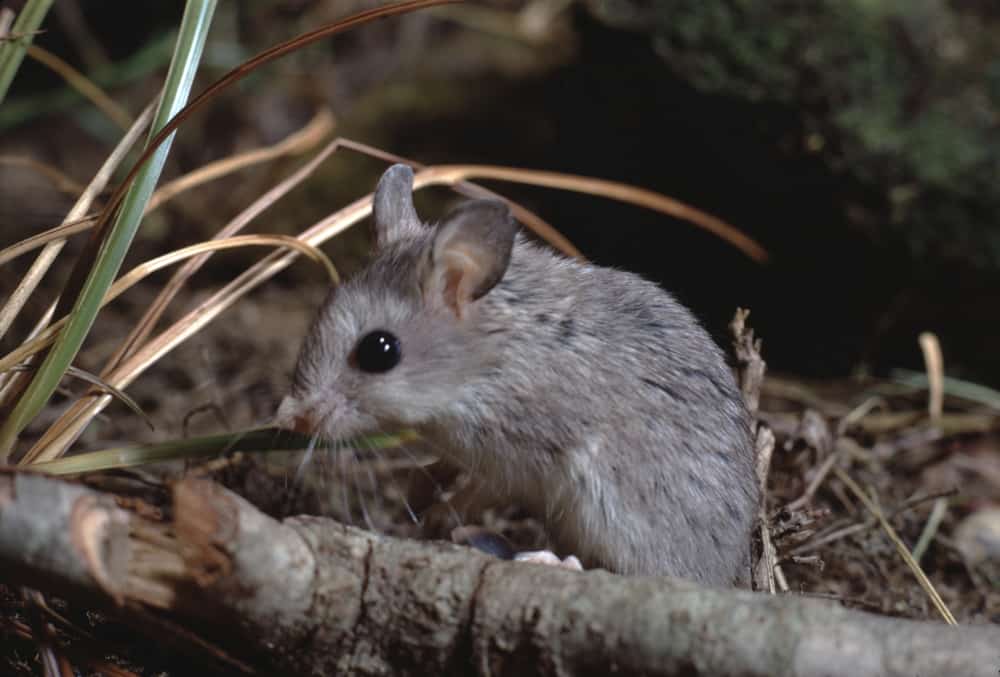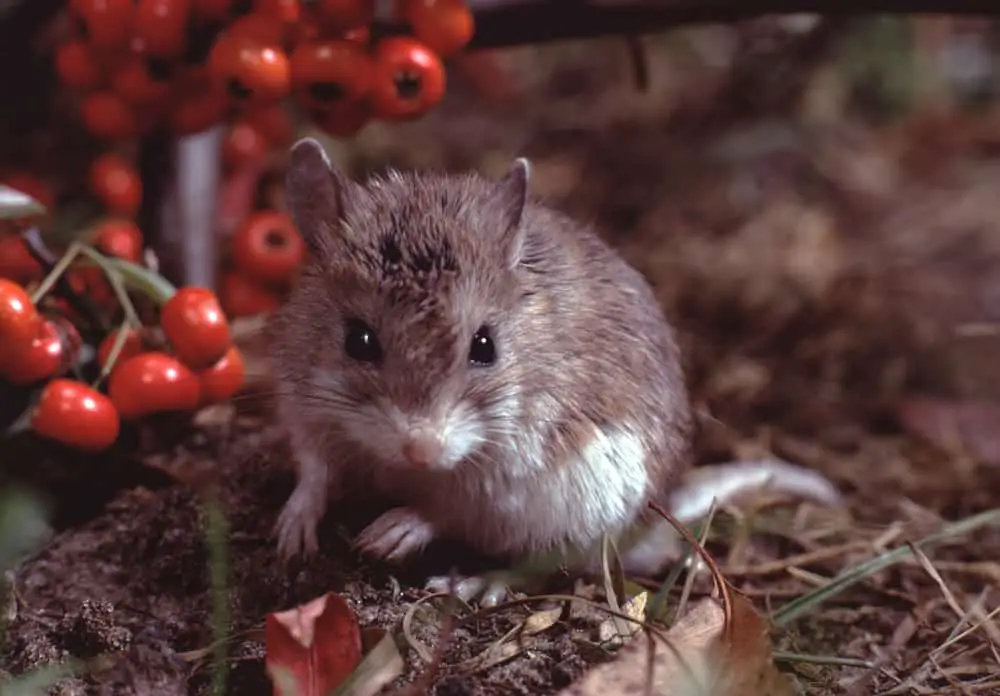The grasshopper mouse (Onychomys leucogaster) is a unique and fascinating species of rodent found across the desert regions of North America. It has adapted to its environment in remarkable ways, allowing it to thrive in arid climates where other small mammals may struggle.
By studying this creature, researchers have made new discoveries about how animals adapt to extreme conditions. This article will discuss the biology, behavior, and ecology of the grasshopper mouse, as well as highlight some interesting facts about these intriguing rodents.
Grasshopper mice are named for their large hind legs that allow them to jump like a grasshopper or kangaroo rat. They also possess specialized adaptations such as enlarged ears, long whiskers, and sharp claws which help them sense and catch prey items in their underground burrows.
Their diet consists predominantly of insects but they can also feed on lizards and small birds when available. In addition to foraging for food above ground, grasshopper mice typically dig tunnels up to two meters deep into the soil where they store food reserves and live during colder months.
Grasshopper mice are known for exhibiting bold behaviors towards predators such as rattlesnakes; rather than running away from danger, they stand their ground by rearing up onto their hind legs while chattering aggressively at any potential threats.
Moreover, they produce alarm calls which warn nearby conspecifics of approaching danger—a trait not seen with many other rodents. The social dynamics within groups of grasshopper mice involve complicated hierarchy systems based upon dominance-submission relationships between males and females.
These hierarchical structures provide an important insight into animal communication strategies under natural conditions.
Species Characteristics
The grasshopper mouse is a small, nocturnal rodent native to the deserts of North America. Its body shape is similar to that of an ordinary house mouse, but it has longer hind legs and larger ears than its cousin species.
In addition to these distinct physical features, grasshopper mice have unique coloration patterns that can help identify them in the wild. The upper parts of their bodies are usually gray or light brown in color with darker stripes along their backs. Their underbellies tend to be much lighter in comparison, often white or yellowish-white.

Grasshopper mice also possess large eyes and long tails which grow up to 80% of their body length. Furthermore, they are equipped with powerful hind feet which allow them to climb trees and jump distances up to 5 times their own body length when threatened by predators. Additionally, this specialized tail helps provide balance while running and jumping through desert terrain at high speeds.
Overall, the distinctive combination of physical characteristics make grasshopper mice easily recognizable amongst other rodents found in North American deserts. This includes several colors and pattern variations as well as a long tail and strong hind limbs for better mobility across arid landscapes.
Habitat And Range
The grasshopper mouse primarily inhabits deserts, grasslands, shrublands and rocky areas. It is typically found in open habitats with loose or sandy soils. In the United States, it can be located from central Texas to southern Colorado and Arizona. It is also present in Mexico and portions of Central America. Grasshopper mice are not suited to living in densely forested regions; however they may occasionally inhabit meadows adjacent to forests.
Grasshopper mice often make their homes beneath rocks, logs or other debris for protection against extreme weather conditions during the night time hours when temperatures drop drastically. During daylight hours, these rodents will venture out into more exposed areas where food sources such as insects, lizards and small mammals are abundant. They have even been observed consuming scorpions due to their high fat content which helps sustain energy levels throughout the day.
Foraging behavior tends to vary slightly depending on habitat type and availability of resources at any given location but generally consists of searching around ground level features such as rocks and logs for potential prey items before using a combination of hopping motion along with forefeet digging motions to catch them. This method has proven successful for this species since its diet consists mostly of invertebrates that live within the soil or near its surface layers.
Diet And Foraging Behavior
Having discussed the habitat and range of grasshopper mice, this section will focus on their diet and foraging behavior. Grasshopper mice have an omnivorous diet that is composed primarily of insects including grasshoppers, beetles, caterpillars, crickets, ants and wasps.
They also feed on other small invertebrates such as spiders, scorpions and centipedes alongside seeds, fruits and roots. It should be noted that some species have been known to catch small lizards or snakes if they become available in their habitats.
Grasshopper mouse foraging behavior involves using a combination of search strategies focused on locating food sources efficiently with minimal risk. For instance, these rodents are well-known for tracking prey by scent-marking trails in order to locate them quickly when needed.
Additionally, they move through their territory systematically while searching crevices and vegetation where potential prey may hide. Furthermore, they often return to areas already searched in order to assure no food source is missed out during the hunt.
Finally, grasshopper mice can survive extended periods without food due to their ability to store fat reserves which allows them to remain active during times when adequate nutrition cannot be found right away. In addition, it has been observed that individuals tend to increase their activity levels at night when more opportunities arise for successful hunting sessions.
Reproductive Habits
Grasshopper mice reproduce seasonally, with the breeding period beginning in late winter and lasting until summer. During this time, males will establish their territories to attract females for mating. Male grasshopper mices engage in a special courtship behavior known as ‘zwittering’ that involves an alternating series of jumps and leaps while vocalizing.
Once a female is attracted to a male’s territory, she will remain there for several days during which copulation occurs multiple times.
The gestation period for these animals is just over three weeks long. After giving birth, young are weaned at around 25-30 days after parturition. Parental care continues even after weaning; mothers will allow their offspring to ride on her back when necessary and provide protection from predators or other dangers up until the day they disperse from the parental home range.
Offspring numbers can vary significantly among litters due to environmental factors such as food availability, but typically average between 3-7 pups per litter. As soon as they reach adulthood, usually within 2 months of birth, juveniles must find new areas where they can establish their own territories and begin the reproductive cycle anew.
Interactions With Humans
Grasshopper mice are primarily nocturnal, which limits their interactions with humans. Despite this, grasshopper mice can have significant impacts on human populations when they enter homes and buildings. They will consume stored foods and damage fabrics in search of nesting material. In agricultural areas, these rodents feed heavily on grain crops such as corn and wheat, resulting in crop loss.
The interaction-ecology between humans and grasshopper mice is a complex one that involves both predator-prey relationships as well as coexistence strategies. Grasshopper mice are important predators of various insect pests; however, if their numbers become too large or concentrated in an area, they may cause considerable economic losses by consuming stored grains and damaging property. On the other hand, some landowners consider them beneficial due to their role in controlling insects.
Various rodent control methods exist for managing grasshopper mouse populations around human dwellings. These include trapping, habitat modification (removal of food sources), chemical repellents, toxicants and fumigants. It is also possible to reduce potential conflicts between humans and grasshopper mice through coexistence strategies such as exclusion barriers, periodic cleaning of garbage disposal sites, proper storage of foodstuffs and regular inspection of premises for signs of infestation.
Conservation Status
The conservation status of the grasshopper mouse is of great concern. It has been classified as an endangered species, due to its rapid population decline and habitat loss in recent years. There have been numerous efforts to conserve and protect this species from further destruction.
These conservation strategies include:
- Developing protected areas for the species’ survival;
- Educating local communities on the importance of preserving wildlife habitats;
- Implementing sustainable land management practices that will minimize human impact on the environment.
In addition, ongoing research projects are being conducted to assess the current status of grasshopper mice populations, so effective protective measures can be taken accordingly. As a result, these findings could help inform future conservation plans and support existing initiatives aimed at protecting this vulnerable species.

Adaptations For Survival
Grasshopper mice possess a range of adaptations which enable them to survive in their unique environment. Camouflage is an important adaptation; grasshopper mice have fur that can blend into the desert sand or soil, providing protection from predators.
Apart from camouflage, they also rely on burrowing skills for survival. This allows them to seek shelter underground and escape extreme temperatures during daylight hours. A nocturnal lifestyle is essential for grasshopper mice due to the high temperature of their desert habitats during the day; this helps with thermoregulation by ensuring they are active when it is cooler at night.
In addition to these adaptations, grasshopper mice also store seeds in order to gain sustenance throughout difficult times when food may be scarce. As such, grasshopper mice have adapted successfully to life in deserts and other arid environments where resources are limited and competition amongst species can be strong. They demonstrate remarkable resilience in terms of both physical capabilities and behavioural traits needed to thrive under harsh conditions.
By employing fundamental evolutionary strategies such as camouflage, burrowing skills, a nocturnal lifestyle, thermoregulation and seed storage, grasshopper mice have been able to overcome many challenges posed by living in arid landscapes. Their ability to adapt effectively has allowed them to persist despite considerable environmental pressures over time.
Conclusion
The grasshopper mouse is an interesting species that has adapted to life in the extreme desert environment of North America. Its sturdy body and keen senses enable it to survive harsh conditions while hunting a wide variety of prey, including insects, rodents and lizards. Although they are small in size, their population densities can be quite high due to their ability to reproduce rapidly. They also have been observed interacting with humans on occasion, although this rarely affects them negatively.
Despite its adaptations for survival, there are still threats facing the grasshopper mouse. One major threat comes from habitat destruction caused by urban expansion or other land-use changes; these activities often result in reduced food availability for the mice as well as increased competition for resources. Additionally, agricultural practices such as pesticide use can further reduce populations of this unique species.
Conservation efforts should focus on protecting habitats and preserving existing ecosystems where possible so that natural balance can be maintained throughout the range of the grasshopper mouse. In addition, education programs should be implemented to inform people about how important this species is to local environments and why conservation measures must be taken if we wish to maintain healthy populations across its entire range into future generations.

